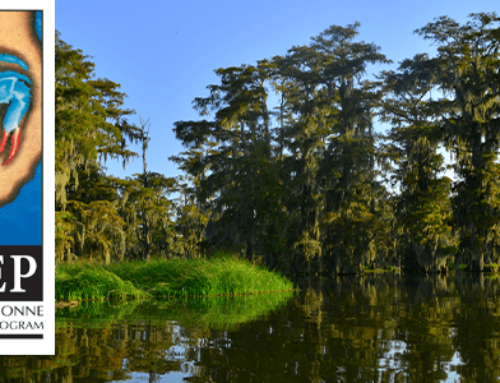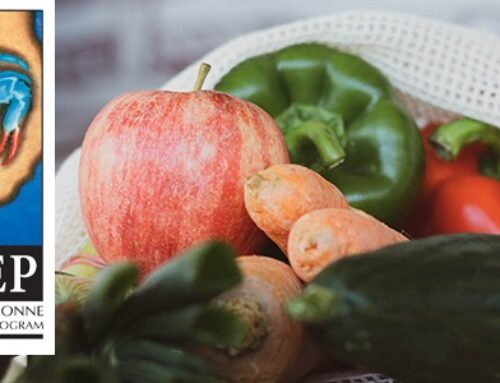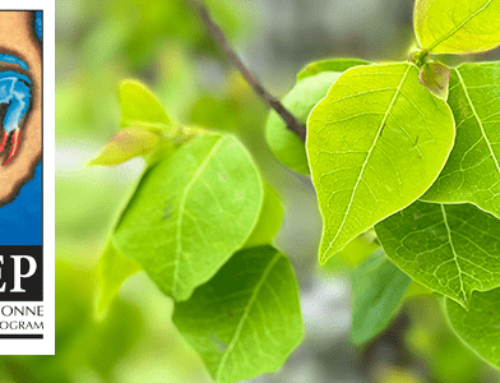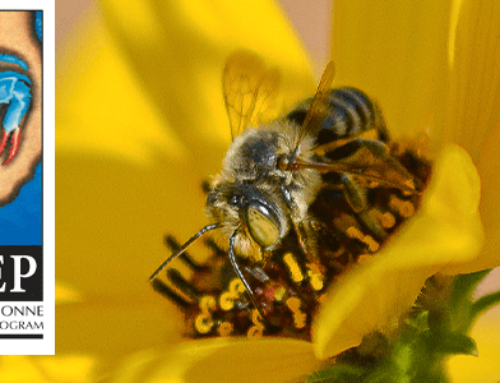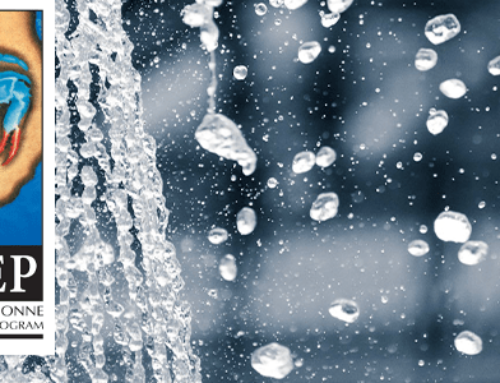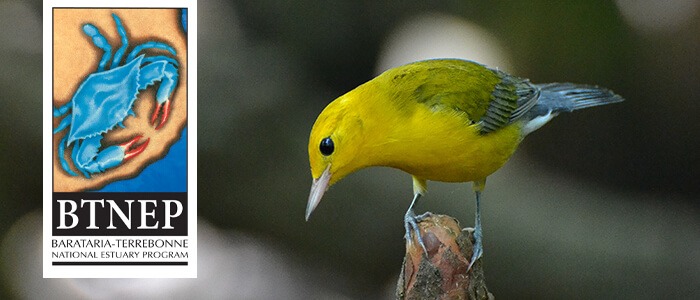
Spring is in the air, and so are the birds!
How little birds make a big impact.
As springtime temperatures and growth reach Louisiana, our landscape changes, and with the changing landscape comes a beautiful array of flying visitors. April is a great month for bird watching, whether it’s at a known watching site, or in your own backyard.
The Great Migration
Bird migration is driven by the availability of resources. Many birds spend the winter in warmer climate areas that offer a greater variety of foods, such as Mexico, Central America and South America. As spring arrives to the central Gulf coast area, it brings longer days, budding plants, and an increased insect population. Generally, estuarine wetlands are considered to be among the more biologically productive areas on earth. Here, this productivity is further enhanced by the influence of the Mississippi and Atchafalaya Rivers with the abundant nutrients and sediments they carry. Tides carry fresh water and nutrients into the bays and wetlands of the Barataria-Terrebonne Estuary, which in turn stimulates the growth of plants and algae. Plants and algae serve as the basis of the food chain that support the many birds that are found here. Our coast also serves as an important resting point for birds traveling long distances across the Gulf of Mexico on their way to northern breeding grounds.
Little birds with a big impact
Over 400 species of birds have been found in the Barataria-Terrebonne Estuary. Of those 400 species, 185 are considered common or abundant during at least part of the year. These animals may seem small, but they have a big impact on our ecosystem. Birds disperse seeds crucial to plant growth, they help to control pests, and they signal important information about our habitat.
Plant with a purpose
The Barataria-Terrebonne National Estuary loses land every year. According to the U.S. Geological Survey data, “The researchers found that over the 84 years studied, Louisiana’s rates of loss ranged from a high of 83.5 square kilometers (32.0 square miles) per year to a more moderate 28.0 square kilometers (10.8 square miles) per year. While land loss rate is not a constant, this equates to losing an average of an American football field’s worth of coastal wetlands in 34 minutes when losses were rapid, or in 100 minutes at more recent rates.” While this loss of land has multiple negative effects for our estuary, it can also have a negative impact on our resident and migratory birds.
You can help by planting native plants that offer birds different heights, a variety of foods, and options for shelter — in turn, you’ll welcome a higher number of species to your yard. Birds rely on three aspects to survive: food, habitat, and water. Offering each of these aspects will invite birds into your yard for spectacular bird watching.
Here are several plants you can plant in your yard to provide food and shelter in every season:
- Spring: Mayhaw, Huckleberry, Dewberry, Red Maple, Elms
- Summer: Roughleaf Dogwood, Arrowwood, Indigo Bush, Pines, Coral Honeysuckle
- Fall: American Beautyberry, Mayhaw, Persimmon, Hackberry, Pecan
- Winter: Bald Cypress, Cherry Laurel, Sumac, Honey Locust, Oak
Winter can be a tough season for birds as many deciduous plants lose their foliage. By planting a variety of evergreens, you can provide shelter and protection from predators year-round.
Lastly, ensuring you have a clean drinking water source for birds will help to create an inviting habitat. Try installing a bird bath, a small pond with circulating water, or leaving out a small water dish. Just be sure to clean the water source regularly, as to not provide a breeding ground for mosquitoes.
For more information about creating an inviting habitat for birds: Attracting Wildlife
Ready to watch?
If you don’t have access to a bird-friendly yard or watching area, head to one of the many beautiful sites within our estuary to spot resident and migratory birds: Birding Trails
You can also attend the Grand Isle Migratory Bird Festival, held April 12th through the 14th. Last year, 168 different bird species were identified during the three-day event. Celebrate the migration of birds along with other birdwatchers: Grand Isle Migratory Bird Festival
For more information about the Barataria-Terrebonne National Estuary’s resident and migratory birds: Fact Sheets
Resources: U.S. Geological Survey


